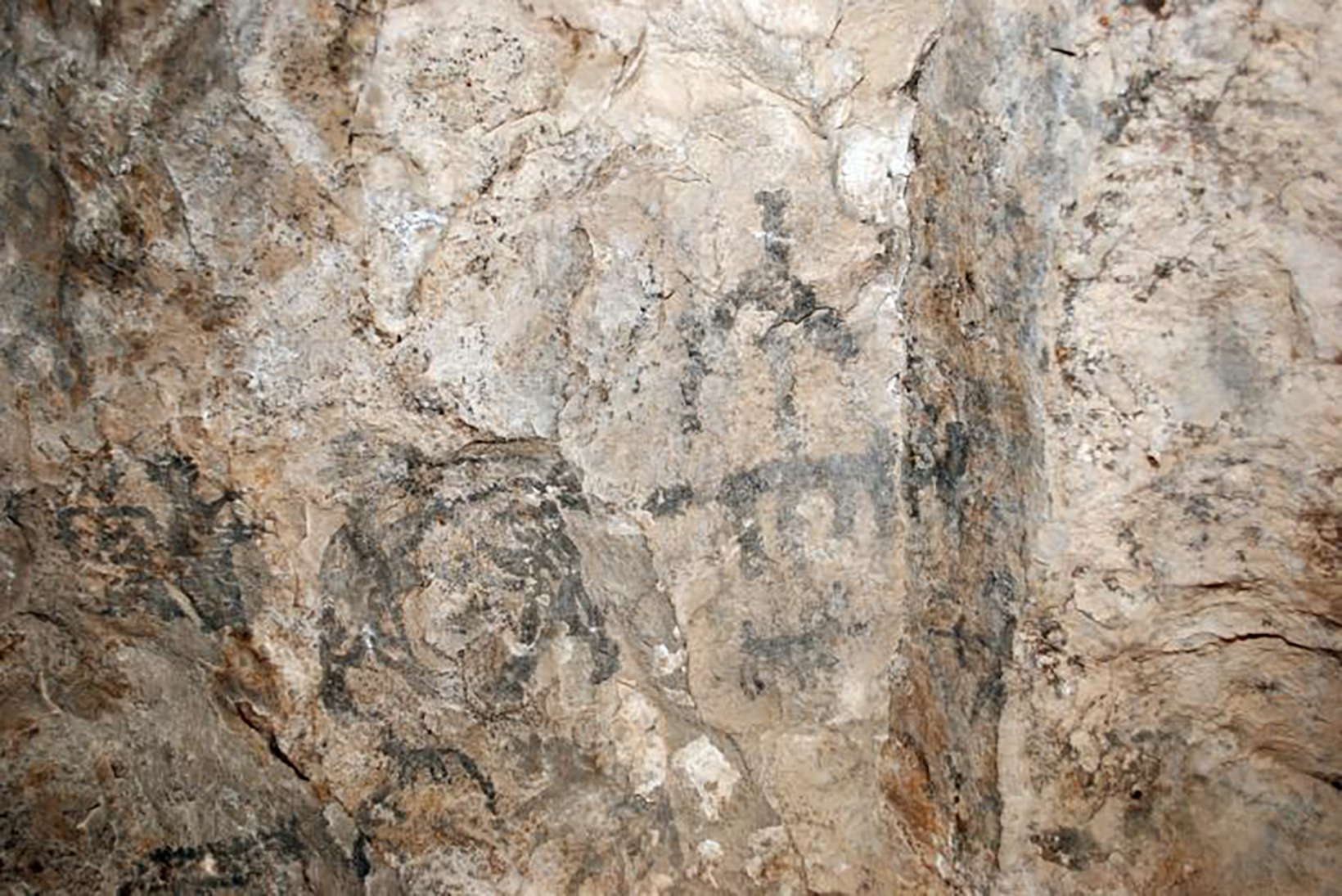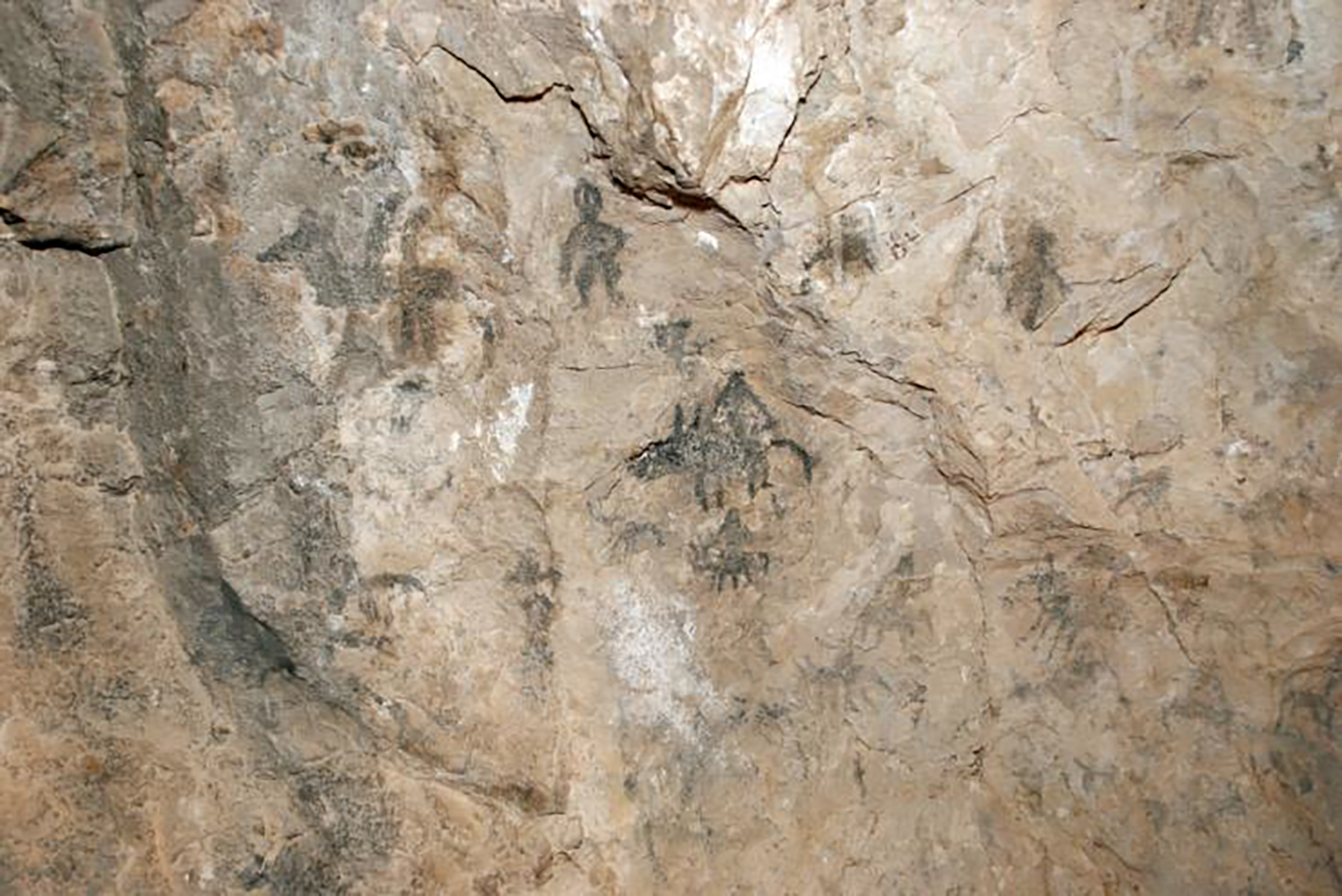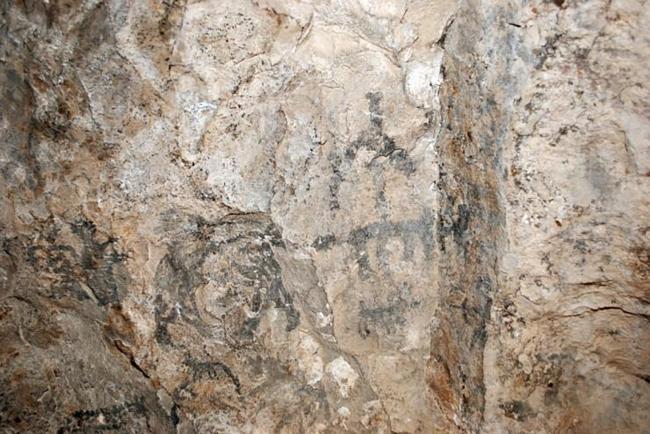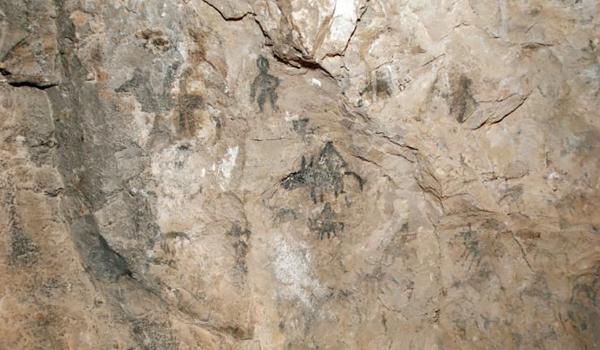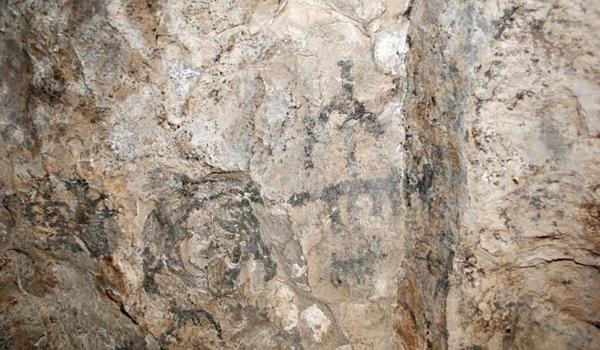Cueva de Las Mulas de Molino
Route element
Cueva de Las Mulas de Molino
The interior of the Cueva de las Mulas houses rock art associated with the presence of mules and other animals brought by the Spaniards conquistadors to the region during the 14th and 17th centuries. It is located in the Molino Canyon, in the Guatimapé Valley, within the municipality of Nuevo Ideal, in the state of Durango.
Through the Guatimapé Valley passed the ancient Camino Real that headed north, from Zacatecas to the Santa Bárbara mines and later to New Mexico. In 1563, it was at this site, during an expedition by Francisco de Ibarra, that the Spaniards and the indigenous Tepehuanes group who inhabited the area first came into contact.
It is at the top of the northern mountain range, in the last kilometers of Molino Canyon, where this shallow cave is located, with an entrance over 10 meters high. It extends 14 meters longitudinally and is made up of various cavities and recesses. On its walls are pictorial representations of mule trains with loads, guided by riders dressed in Spanish style. These images reflect the indigenous perspective witnessing the scenes of Spanish appropriation and settlement of the region. The earliest information about the period when the artwork was created, based on the presence of horses, mules, and donkeys, hats, clothing, tools, and weapons, indicates that it was done toward the end of the 16th century and the first half of the 17th century.
The vast majority of the expressions in this cave, which total eight sets, are made using black pigments from charcoal and water. These sets are distinguished by five main themes: scenes of anthropomorphic hunting with bows and arrows; scenes of livestock management where riders armed with pikes are tending to herds of horses; scenes related to trade and expeditions showing mule trains with cargo guided by riders dressed in Spanish style; warlike and political or ritual scenes, involving characters with European clothing and weapons or with indigenous attire; and finally, representations of isolated emblematic animals. The condition of the paintings varies, generally depending on factors such as water leakage, the proximity of the paintings to the cave floor, and the erosion it may have.

